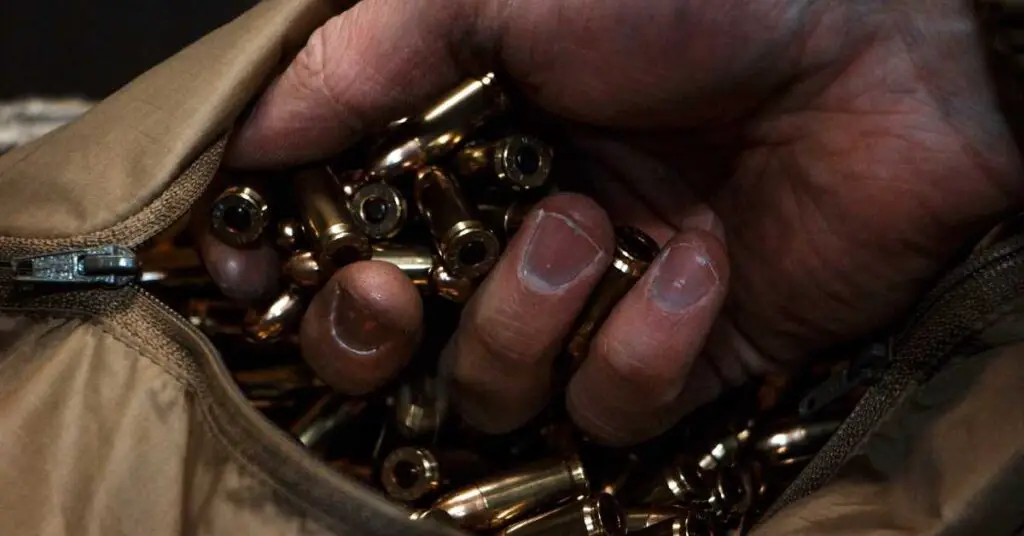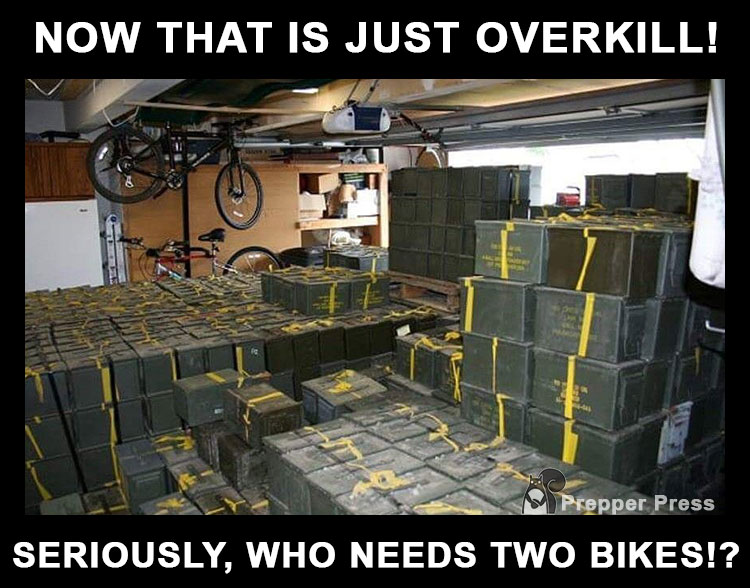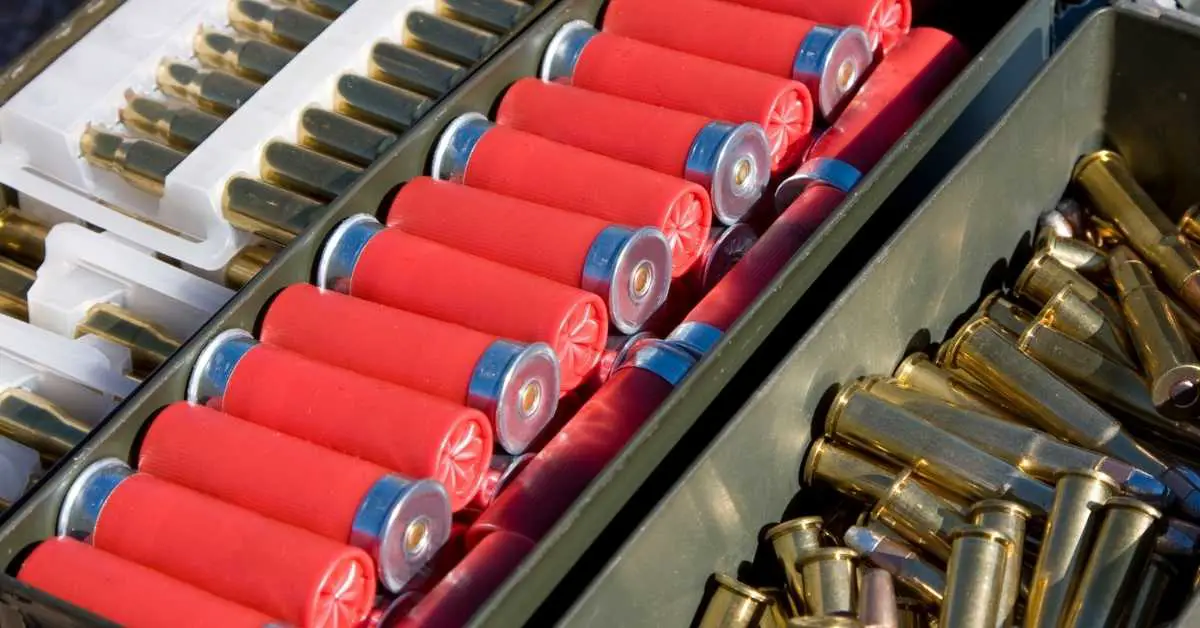When it comes to firearms, one of the most important considerations to make is the quality and condition of your ammunition. Not only can poor-quality ammo put your firearms at risk, but it can also affect your accuracy and performance. But perhaps most importantly, you need to know how long your ammunition is good for. In this blog post, we’ll discuss why it’s important to be aware of the shelf-life of your ammo, as well as how you can ensure that your ammo remains in top condition.
Introduction

When it comes to ammunition, there is no universal answer when it comes to how long it will last. Depending on the type of ammo and its storage conditions, it can last anywhere from a few years to decades. In general, it is best to replace or rotate your ammo every few years, regardless of the type, to ensure it is safe to use.
To begin with, let’s consider the type of ammunition. Different types of ammo have different shelf lives, depending on the type of materials used in their production and the conditions in which they are stored. For example, center fire rifle ammunition can last anywhere from 5 to 10 years, while rimfire ammo could last up to 25 or 30 years. Shotgun shells, on the other hand, generally have a shorter shelf life and should be replaced every 1 to 5 years.
In addition to the type of ammunition, storage conditions can also affect the shelf life. To ensure your ammo stays in good condition, it should be stored in a cool, dry place away from direct sunlight and moisture. It should also be kept away from any type of chemical or gas, as these can corrode the metal components and reduce the shelf life. It’s also a good idea to keep the ammunition away from any kind of vibrations, as these can cause the powder to break down over time.
The shelf life of ammunition depends on the type of ammo and the storage conditions. It’s important to replace or rotate your ammo every few years, regardless of the type, to ensure it is safe to use. Proper storage is also key for maintaining the quality of your ammo and extending its shelf life.
Shelf life of ammunition
Ammunition has a shelf life, just like any other product. The length of time ammunition can be stored before it begins to deteriorate depends on many factors, such as manufacturing quality, storage conditions, and the type of ammunition.
ambient temperature and humidity levels are the two main environmental factors that affect how long ammunition will last. Ammunition should be stored in a cool, dry place – ideally between 55-60 degrees Fahrenheit and at low humidity levels (below 20%).
Storing ammunition in warmer or more humid conditions will cause it to degrade faster. For example, if you live in an area with high ambient temperatures (above 75 degrees Fahrenheit) or high humidity levels (above 60%), your ammunition may only have a shelf life of 3-5 years.
In contrast, if you live in an area with cooler ambient temperatures (below 45 degrees Fahrenheit) and low humidity levels (below 10%), your ammunition could last for 10 years or more before it begins to degrade.
The type of ammunition also affects its shelf life. Rimfire cartridges – such as .22LR, .17HMR, and .22WMR – are particularly sensitive to environmental conditions and should not be stored for longer than 5 years. Centerfire rifle cartridges – such as .223/5.56, .308/7.62, and .30-06 – have a longer shelf life of 7-10 years when stored under ideal conditions. Handgun cartridges – such as 9mm, .40 S&W, and .45 ACP – also have a shelf life of 7-10 years.
Shotgun shells have the longest shelf life of all types of ammunition, with 12 gauge shells lasting up to 15 years and 20 gauge shells lasting up to 10 years. Of course, these are just general guidelines – your mileage may vary depending on the specific type of ammunition and how well it was manufactured.
If you’re unsure about whether your ammo is still good to use, there are a few simple tests you can perform at home to check its condition:
1) Check the brass casing for signs of corrosion or verdigris (greenish-blue patina). If the brass is deeply corroded or has turned greenish-blue, it’s probably not safe to use.
2) Look for cracks or splits in the brass casing. These defects can cause dangerous pressure buildup when the cartridge is fired and should not be used.
3) Check the primer for signs of corrosion or verdigris. If the primer is deeply corroded or has turned greenish-blue, it’s probably not safe to use.
4) Examine the powder charge through the clear plastic hull of shotgun shells. If the powder looks clumped together or has changed color from its original bright white color, it’s probably no longer good to use

Storing ammunition
Ammunition can be stored indefinitely if properly prepared for storage. The primary concern is to prevent the ammunition from being damaged by moisture or other environmental conditions. The following tips will help you ensure that your ammunition is in peak condition when you need it.
-Store ammunition in a cool, dry place. A temperature of about 70 degrees Fahrenheit is ideal.
-Avoid storing ammunition in direct sunlight or near heat sources.
-Store ammunition in airtight containers such as plastic bags or sealable metal cans.
-Pack containers of ammunition loosely to allow for air circulation and prevent corrosion.
-Inspect ammunition regularly, and discard any that shows signs of damage such as denting, rusting, or crushing.
Does various ammo have different shelf lives?
In the world of guns, ammunition is one of the most important components. Ammunition is the lifeblood of any firearm, and the quality and type of ammunition you choose will have a major impact on the performance of your gun. While most modern ammunition is designed to last for decades, it’s important to understand that different types of ammunition have different shelf lives.
Modern Ammunition
Modern ammunition is often made with durable materials and is designed to last for many years. While there’s no hard and fast rule for how long it will last, modern ammunition can often last for decades with proper storage. However, it’s important to note that modern ammunition can degrade over time and should be checked periodically for any signs of corrosion or damage.
Non-corrosive Ammo
Non-corrosive ammunition is designed to resist corrosion and has a longer shelf life than traditional ammunition. This type of ammo is commonly used in military and law enforcement applications, as it offers better protection against environmental factors such as humidity and extreme temperatures. Non-corrosive ammunition is typically more expensive than traditional ammunition, but it will last longer and provide improved performance.
Full Metal Jackets
Full metal jackets (FMJ) are one of the most popular types of ammunition on the market today. They are designed for high accuracy and long shelf life. FMJ ammunition is typically made with a copper jacket around the bullet, which helps to protect it from corrosion and wear, and can last for many years.
Steel Case Ammo
Steel case ammunition is a type of ammunition that is made with steel instead of brass. This type of ammo is often cheaper than other types of ammunition and is commonly used in military and target shooting applications. While steel case ammo usually has a longer shelf life than brass case ammunition, it can be prone to corrosion and wear over time.
Concealed Carry Ammo
Concealed carry ammunition is designed for use in small, compact handguns, and is designed to provide reliable performance in a variety of situations. Concealed carry ammo is usually made with high quality materials and is designed to provide consistent performance over time. While the shelf life of this type of ammunition will vary depending on the manufacturer, it usually has a longer shelf life than other types of ammunition.
Different types of ammunition have varying shelf lives, and it’s important to understand the differences between the types of ammo before choosing the right one for your needs. Modern ammunition is generally designed to last for many years, while non-corrosive, FMJ, and steel case ammo typically have longer shelf lives than other types of ammo. Lastly, concealed carry ammo is designed to provide reliable performance in small handguns and usually has a longer shelf life than other types of ammunition.
How to tell if your ammo has gone bad?
Most ammo these days is mass produced and has a very long shelf life. However, there are a few things that can happen to ammo that will make it bad. If your ammo has been exposed to water, it could rust and be unusable. If it has been exposed to extreme heat, the powder could break down and not produce the correct amount of power.
Signs that your ammo has gone bad
As you know, ammunition doesn’t last forever. In fact, the average lifespan of most ammo is only about 10 years. After that, it starts to degrade and can become dangerous to use. Here are some signs that your ammo has gone bad:
-The primer is no longer intact
-The powder has become clumpy or discolored
-The bullet has begun to separate from the casing
-The brass is corroded or tarnished
If you see any of these signs, it’s best to dispose of the ammo safely and buy new ones.
What causes ammo to go bad?
Ammunition can go bad for a number of reasons. The three most common are corrosion, degradation, and obsolescence.
Corrosion is the deterioration of ammo due to exposure to the elements. This can happen when ammo is stored in humid or salty conditions, or if it gets wet. Degradation is the breaking down of the components of ammo over time due to exposure to heat, light, or other environmental factors. Obsolescence is when Ammo becomes unavailable due to changes in technology or discontinuation of production.
There are a few ways to tell if your ammo has gone bad. The first is to check the expiration date on the box. If the date has passed, the ammo may not be safe to use. The second way to tell if your ammo has gone bad is to inspect the rounds themselves. Look for signs of corrosion or degradation, such as discoloration, cracks, or deformities. If you see any of these signs, the ammo may not be safe to use.
How to properly store your ammo?

Most people don’t realize that ammunition has a shelf life. Ammunition can go bad over time, especially if it’s not stored properly. It’s important to know how to store your ammo correctly so that it doesn’t go bad. There are a few things you can do to extend the shelf life of your ammo.
Tips on how to extend shelf life
Most people think that as long as they keep their ammo in a cool, dry place, it will last indefinitely. However, there are a few things that you can do to ensure that your ammo will be in good condition when you need it.
- Store ammo in a cool, dry place.
- Check ammo for corrosion regularly.
- Store ammo in an airtight container.
- Use a desiccant to absorb moisture.
Long-term storage of ammo
If you plan on storing your ammo for a long time, there are a few things you need to do to make sure it stays in good condition. First, you need to make sure the ammo is clean. Any dirt or debris on the bullet can cause it to degrade over time. Second, you need to store the ammo in a cool, dry place. Heat and humidity can also cause the ammo to degrade. Finally, you need to make sure the ammo is stored in a sealed container. This will keep out any moisture that could damage the bullets.
